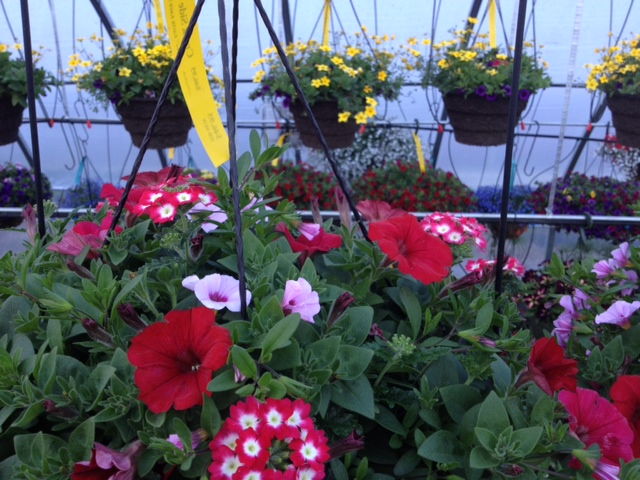Hot Weather Tips
- When the temperature goes over 90 degrees; an extra dose of love and care will help keep your flowers flourishing throughout the summer.
- Check flowers twice daily for water, once in the morning and again in the evening. Some pots/beds may require additional water applications to fight the heat.
- Apply enough water so that the water is coming out the bottom of container, especially hanging baskets.
- If a basket or patio pot seems to be stressing and ‘going down’, do not panic!
- Flowers pots that may be struggling in the heat should be moved to a protected location to take off the stress. Water thoroughly. Then when it cools down, move them back to original location.
- Don’t get caught over-watering when temps cool down again.
- Keep up with your regular fertilizer regime.
- Fertilize every 7-14 days with our Jack’s Blossom Booster or Petunia Feed. When we water more, nutrients are washed out of the soil and flowers need that extra ‘fuel’ to keep producing.
- Prune and cut back straggly growth, especially from petunias, callies and verbena. This helps the plant put energy into new growth. Don’t be afraid to give your plants a little haircut. They will flush out again even bigger and better.
- Is the location good for your plants? As the sun moves around in the summer, a patio pot that was doing fantastic in May is now struggling in the hot sun. Move your container around a shadier location and see if that helps with the stress. Or maybe it is the opposite – a fully leafed out tree my now be hindering growth of sunny flowers.
- In the landscape, any newly planted roses, perennials, shrubs, or trees will require additional irrigation applications
- In between automatic irrigation applications, supplement with a manual application of water from your hose to keep newly planted flowers from drying out.
Caterpillars & Loopers
Caterpillar worms and loopers are showing up now and chewing holes in leaves of many plants on the patio and landscape. Now is the time to treat to prevent further damage. The adult stage is some type of moth that lays eggs in the early evening on buds or leaves. The eggs hatch into little light green worms that feed on leaves and flowers.
Treatment options:
- Pick them off – look for little dark specks of ‘droppings’, check undersides of leaves right above the droppings for worms
- Natural Guard RTU Caterpiller killer w/ Bt, the biological Bacillus thurengiensis – organic choice
- Fertilome Dipel Dust w/ Bt – organic choice
- Bonide RTU Captain Jack’s Deadbug w/ biological Spinosad – organic choice
- Natural Guard Spinosad Soap – soap w/ biological Spinosad – RTU for small applications or hose end RTS for large applications – organic choice
- Bonide Eight RTU for small applications or the hose end RTS for large applications
*Please read and follow all directions provided by manufacturer of each product your try*

